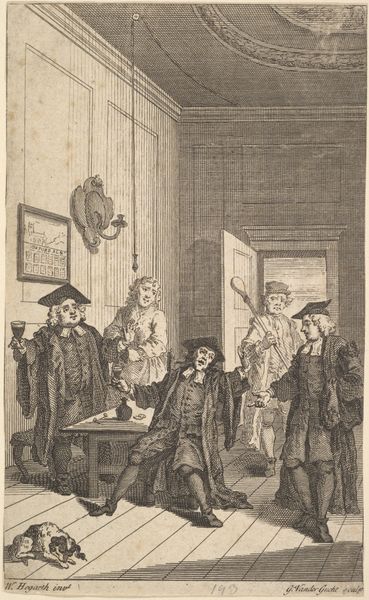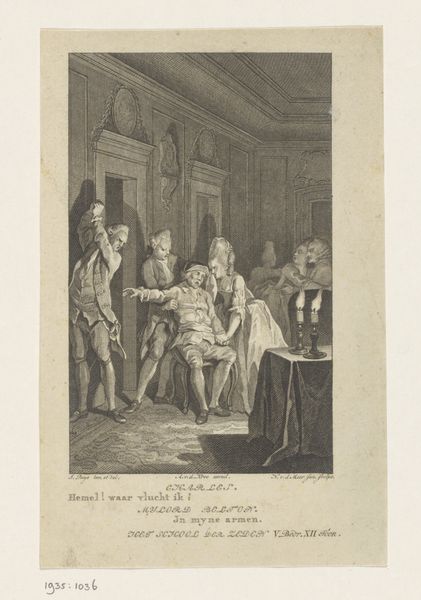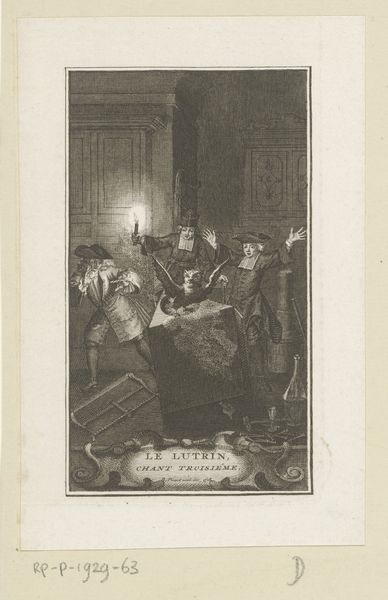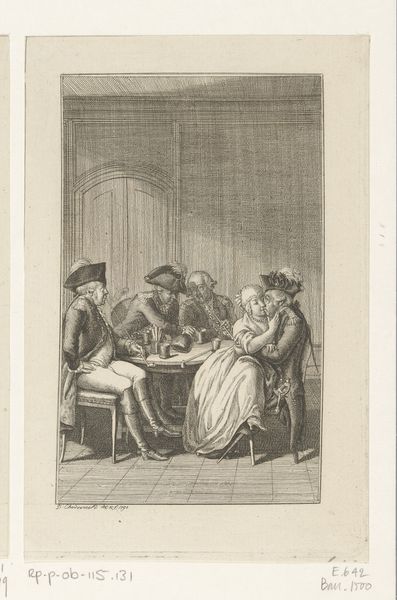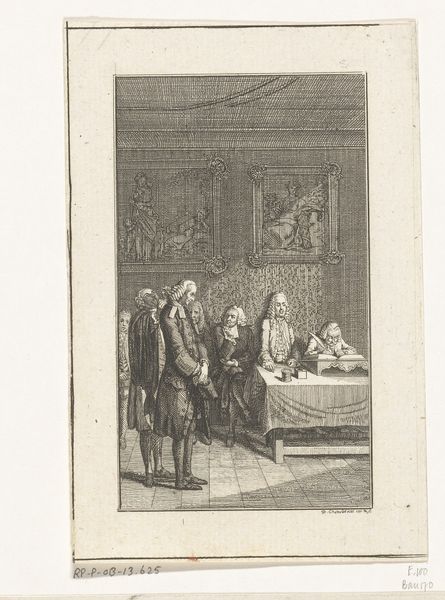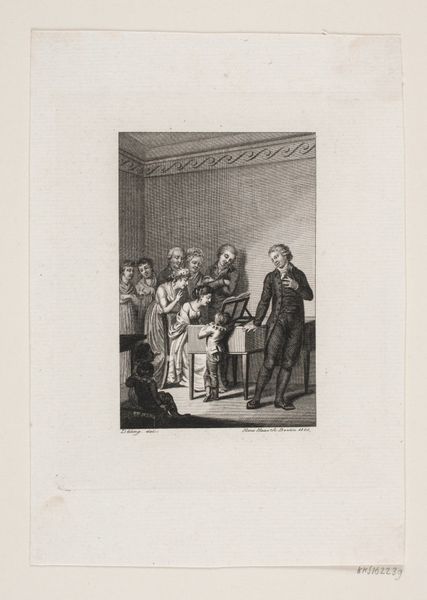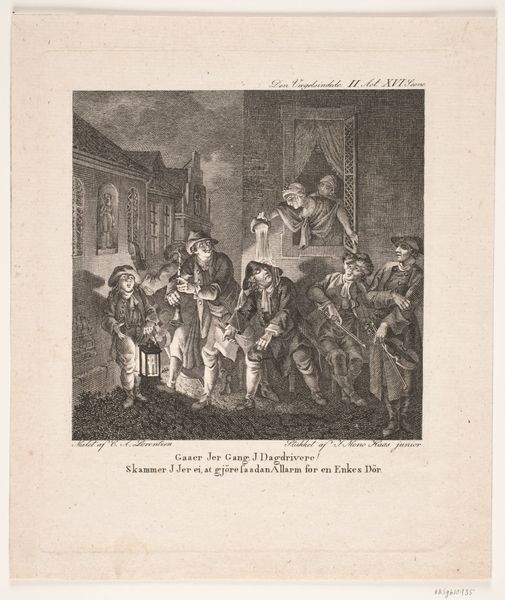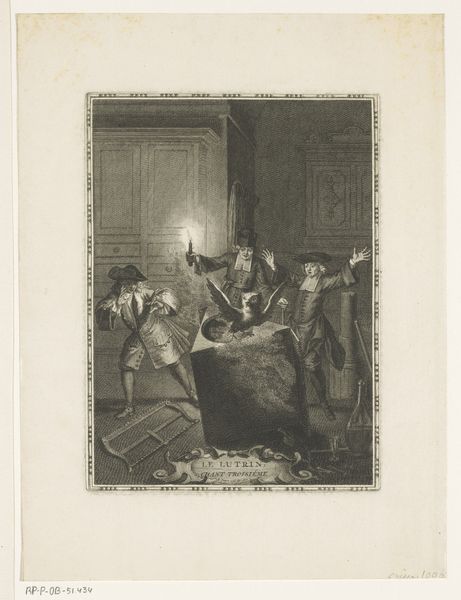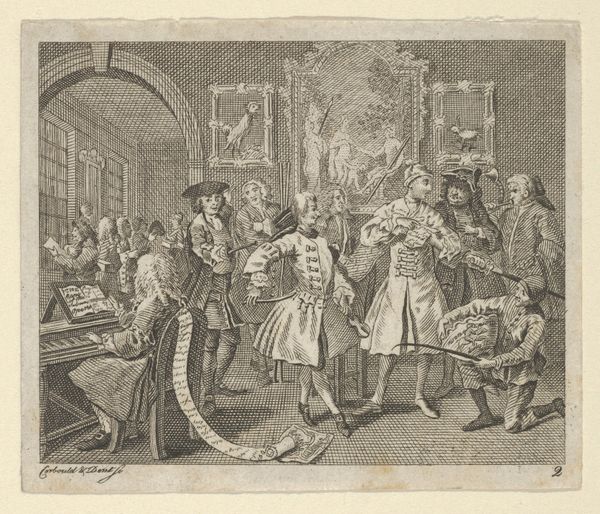
Dimensions: Sheet: 7 5/16 x 4 13/16 in. (18.5 x 12.3 cm)
Copyright: Public Domain
Editor: Here we have William Hogarth's "Frontispiece to 'The Humours of Oxford'," made in 1807. It looks like an ink drawing or a print of some kind. There's a slightly chaotic scene unfolding, a definite sense of revelry… What stands out to you about this piece? Curator: From a materialist perspective, what's fascinating here is the way Hogarth uses readily available materials—ink, paper, and the printing press—to critique the social fabric. Think about the labour involved in producing and distributing these prints. Who was consuming them, and how did this mode of reproduction democratize art while also creating new forms of cultural capital? Editor: That’s interesting, I hadn’t thought about it in terms of the materials themselves enabling the critique. So, the medium *is* the message? Curator: Partly. But consider also what the image depicts. It's not just *what* is being shown (the drunken revelry) but *who* is being shown. These are Oxford scholars, ostensibly the intellectual elite. By distributing this critique through prints, Hogarth directly engages with and challenges established power structures and institutions. Do you see any contradictions between the subject and its material existence? Editor: Well, the debauchery is pretty clear. Is it saying that the elite have certain advantages? Curator: Precisely. Look at the textures he creates with simple lines, the gradations of shadow and light made reproducible, turning the excesses of elite Oxbridge society into commodities, items for widespread consumption and, implicitly, critique. Consider the consumption of alcohol here too as a type of performance as well. What kind of labour would it take to make so many fine articles, clothes, hats, furniture? Editor: It is like he's using mass production to comment on class. This was enlightening – I’ll never look at Hogarth the same way. Curator: Absolutely. Seeing art through the lens of material production and social consumption reveals so much about the artist's intentions and the artwork’s lasting impact.
Comments
No comments
Be the first to comment and join the conversation on the ultimate creative platform.
